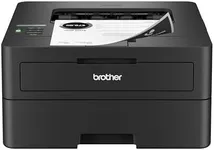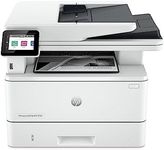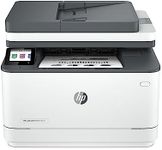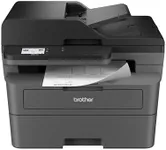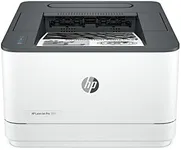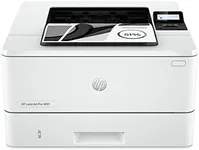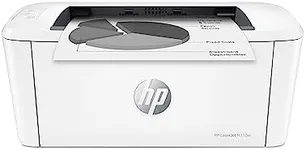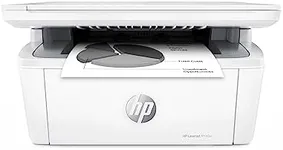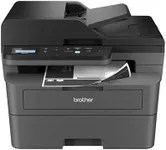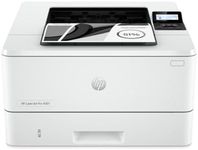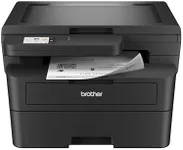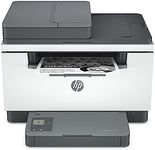Buying Guide for the Best Black And White Wifi Printer
Choosing the right black-and-white WiFi printer can make a significant difference in your printing experience. Whether you need it for home, office, or school, understanding the key specifications will help you make an informed decision. Here are the main factors to consider when selecting a black-and-white WiFi printer.Print SpeedPrint speed, measured in pages per minute (PPM), indicates how quickly a printer can produce documents. This is important if you need to print large volumes of documents regularly. Printers with speeds of 20-30 PPM are suitable for home use or small offices, while speeds above 30 PPM are better for larger offices with higher printing demands. Consider your typical printing volume to determine the right speed for you.
Print QualityPrint quality is measured in dots per inch (DPI) and determines the clarity and detail of the printed documents. Higher DPI values, such as 1200 x 1200, produce sharper and more detailed prints, which is important for professional documents. For everyday printing needs, a DPI of 600 x 600 is usually sufficient. Think about the type of documents you will be printing most often to choose the appropriate print quality.
ConnectivityWiFi connectivity allows you to print wirelessly from various devices, such as computers, smartphones, and tablets. This is convenient for both home and office environments. Some printers also offer additional connectivity options like Ethernet, USB, or Bluetooth. Ensure the printer supports the devices you plan to use and consider if you need additional connectivity features for your setup.
Paper HandlingPaper handling refers to the types and sizes of paper a printer can accommodate, as well as the capacity of its paper trays. If you frequently print on different paper sizes or types, look for a printer with versatile paper handling capabilities. For high-volume printing, a larger paper tray capacity (e.g., 250 sheets or more) will reduce the need for frequent refills. Assess your typical printing tasks to determine the necessary paper handling features.
Duty CycleThe duty cycle is the maximum number of pages a printer can handle per month without experiencing wear and tear. This is crucial for ensuring the printer's longevity and reliability. For home use, a duty cycle of up to 5,000 pages per month is usually sufficient. For office use, especially in high-demand environments, look for a duty cycle of 10,000 pages or more. Estimate your monthly printing volume to choose a printer with an appropriate duty cycle.
Cost of ConsumablesThe cost of consumables, such as toner cartridges, can significantly impact the overall cost of owning a printer. It's important to consider both the price of replacement cartridges and their yield (the number of pages they can print). High-yield cartridges may have a higher upfront cost but can be more economical in the long run. Evaluate your printing frequency and budget for consumables to find a cost-effective option.
Additional FeaturesAdditional features like duplex printing (automatic double-sided printing), mobile printing support, and scanning capabilities can enhance the functionality of your printer. Duplex printing saves paper, while mobile printing allows you to print directly from your smartphone or tablet. If you need to scan or copy documents, look for a multifunction printer. Consider which extra features will be most beneficial for your specific needs.
